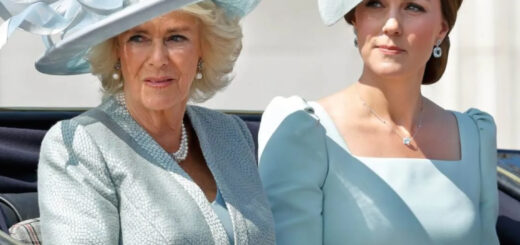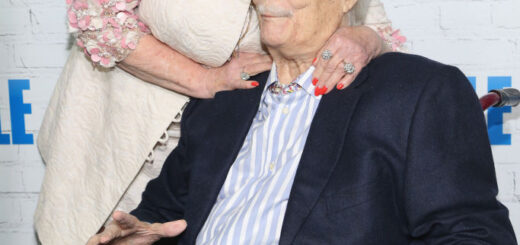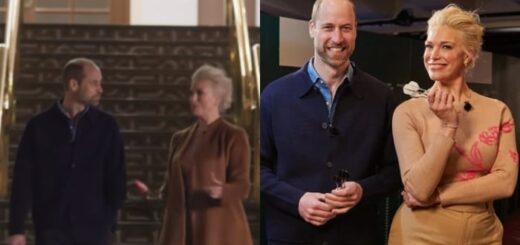Agnetha Faltskog became a superstar with ‘ABBA’ – better sit down before you see her today, age 72
ABBA are well known these days as one of the most legendary bands on the planet. Still to this day, the Swedish quartet are superstars around the world. Yet one of the group’s members, Agnetha Faltskog, has chosen a life outside of the spotlight.

Faltskog, alongside Anni-Frid Lyngstad, was one of the main singers in ABBA. With an all-time great pop voice, she got people to dance with some songs, while breaking their hearts with others. Above all else, though, she became one of the most fascinating music icons of all time alongside her fellow band members.
Agneta Åse Fältskog (born 5 April 1950), known as Agnetha Fältskog (Swedish pronunciation: [aŋˈnêːta ˈfɛ̂ltskuːɡ] ⓘ) and Anna Fältskog,[1] is a Swedish singer, songwriter and a member of the pop group ABBA. She first achieved success in Sweden with the release of her 1968 self-titled debut album. She rose to international stardom in the 1970s as a member of ABBA,[2] which is one of the best-selling music acts in history.[3] She is the youngest member of ABBA, and the only one born in the 1950s. After the unofficial break-up of ABBA in December 1982, she renewed success later in the decade as a solo artist with three albums and a leading role in a movie. She became reclusive in the 1990s, avoiding outside publicity[4] and residing[5] on the Stockholm County island of Ekerö. Fältskog stopped recording music for 16 years until she released a new album, My Colouring Book, in 2004.[6][7] She returned in 2013 with A, her highest UK charting solo album to date.[8][9][10] ABBA has since reformed, and Fältskog has resumed her previous role with the group.[11]

Fältskog worked as a telephonist for a car firm while performing with a local dance band headed by Bernt Enghardt.[14] The band soon became so popular that she had to make a choice between her job and her musical career. She continued singing with the Bernt Enghardt band for two years.[14] During that time, Fältskog broke up with her boyfriend Björn Lilja; this event inspired her to write a song, «Jag var så kär» («I Was So in Love»), that soon brought her to media prominence.

At that time, Karl Gerhard Lundkvist, a relative of one of the band’s members, retired from his successful rock and roll career and began working as a record producer at Cupol Records. Enghardt sent him a demo recording of the band, but Lundkvist only showed interest in Fältskog and her song.[17] She was worried because he was not interested in the band, and they were not to be included on the record. However, she decided to accept the offer and signed a recording contract with Cupol Records.[14] Her self-penned début single «Jag var så kär» was recorded on 16 October 1967 and released through Cupol Records the following month. It topped the Swedish Chart on 28 January 1968 and sold more than 80,000 copies.[14] She also submitted the song «Försonade» («Reconciled») to Melodifestivalen, the Swedish preliminary for the Eurovision Song Contest, but it was not selected for the final.[17] Fältskog developed a career as one of Sweden’s most popular pop music artists, participating in a television special about Swedish composer Jules Sylvain in 1969.[19] The same year, she released the single «Zigenarvän» («Gypsy Friend») about a young girl attending a Gypsy wedding and falling in love with the bride’s brother. Its release coincided with a heated debate about Gypsies in the Swedish media, and Fältskog was accused of deliberately trying to make money out of the situation by writing the song.

Fältskog’s success continued throughout the late 1960s. She met German songwriter/producer Dieter Zimmermann, to whom she became engaged. Her albums thus reached the German charts, and Zimmermann promised she would achieve great success in Germany.[14] However, when she went there and met with record producers, the venture was not productive; Fältskog refused to meet the demands of the producers, describing their chosen material as «horrible». She soon ended her engagement to Zimmermann and returned to Sweden.[14] In 1970, she released «Om tårar vore guld» («If Tears Were Gold»). The Danish composer Per Hviid claimed that she used 22 bars from his composition «Tema» («Theme»), although it was written in the 1950s and had never been recorded. The case dragged on until 1977 when a settlement was reached and Fältskog paid the Danish musician



